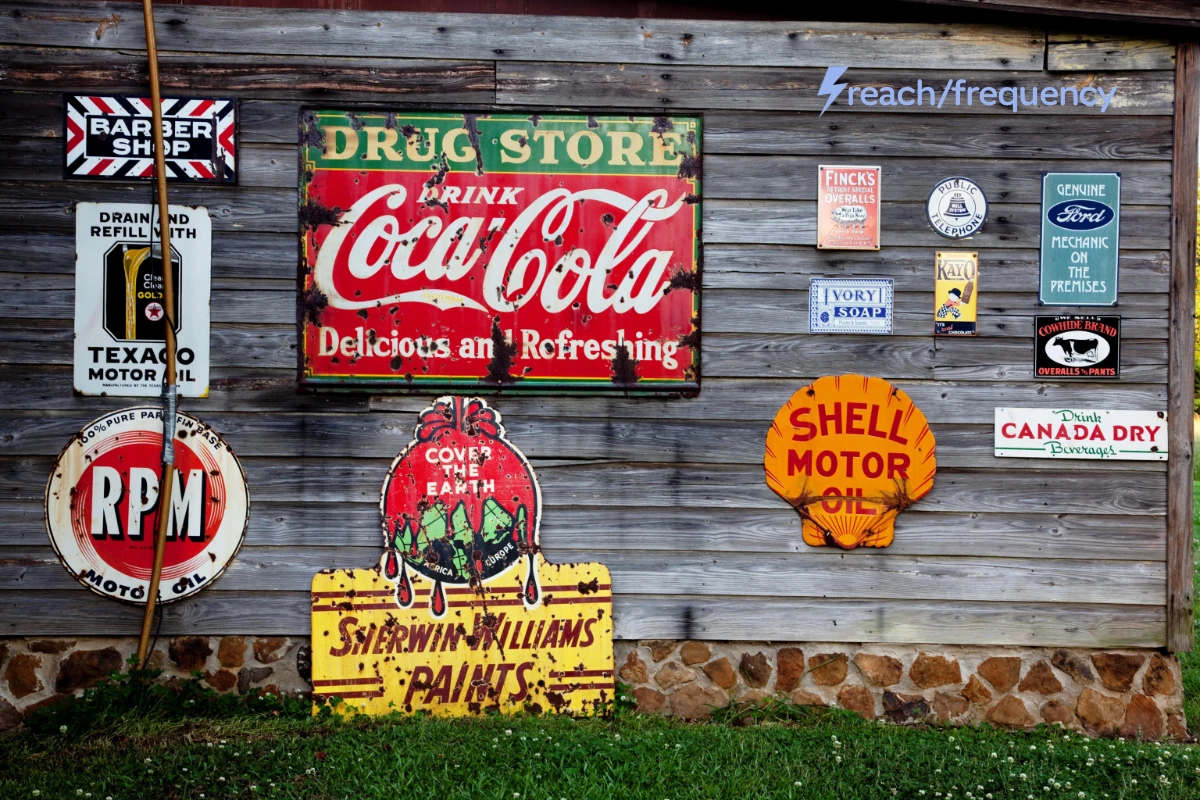Reach and frequency are two fundamental metrics used in advertising and media planning to evaluate the effectiveness of marketing campaigns.

- Reach refers to the total number of unique individuals or households exposed to an advertising campaign within a specific period. It measures the breadth of an advertising campaign’s audience, essentially quantifying how many people have seen or heard the advertisement at least once. Reach is crucial for brand awareness campaigns, aiming to introduce a brand or product to as many potential customers as possible.
- Frequency is the average number of times each individual or household is exposed to the advertising message during the campaign period. It gauges the intensity of an advertising campaign, reflecting how often people are reminded of the message. High frequency can reinforce message recall and increase the likelihood of taking action, but excessively high frequency may lead to ad fatigue among the audience.
Together, reach and frequency help advertisers understand the extent of their advertising’s audience coverage and the intensity of their message delivery. Balancing the two is key to maximizing campaign effectiveness—ensuring the message is seen by a wide audience without overwhelming them with repetition.

Reach and Frequency + Traditional Advertising Agencies.
Reach and frequency have historically been core tenets in advertising agencies for several compelling reasons, tied to their fundamental roles in achieving effective advertising outcomes:
- Audience Coverage: Reach ensures that a campaign touches a broad audience, making it a critical measure for building brand awareness and attracting new customers. For advertising agencies, maximizing reach is often the first step in a campaign, especially when introducing new products or entering new markets. It’s about spreading the word as widely as possible to lay the groundwork for brand recognition.
- Message Reinforcement: Frequency addresses the need to reinforce the advertising message with the target audience. It is based on the understanding that a single exposure to an ad might not be enough to make a memorable impact. By determining the optimal frequency, agencies aim to strengthen message recall, enhance brand familiarity, and ultimately influence consumer behavior without causing annoyance or ad fatigue.
- Campaign Effectiveness: Together, reach and frequency provide a framework for measuring and optimizing campaign effectiveness. They help agencies to strategically allocate their advertising budget to ensure that the message not only reaches a wide audience but does so with enough repetition to be effective. This balance is crucial for achieving campaign objectives, whether it’s increasing sales, generating leads, or enhancing brand equity.
- Media Planning and Buying: Reach and frequency data inform media planning and buying decisions. They help agencies to select the right mix of media channels and time slots to achieve the desired coverage and repetition among the target audience. This strategic selection is vital for maximizing return on investment (ROI) and ensuring that the campaign reaches its intended demographic with the right frequency.
- Performance Benchmarking: In the era before digital analytics became prevalent, reach and frequency were among the few quantitative metrics available to evaluate advertising performance. They served as benchmarks for setting campaign goals, assessing past campaigns, and making adjustments to future strategies based on empirical evidence.
Despite the digital revolution in advertising, which has introduced many more nuanced metrics, thanks to social media and website analytics, reach and frequency remain indispensable. They provide a high-level view of campaign exposure and are crucial for integrated campaigns that span digital and traditional media. Understanding these metrics enables agencies to craft advertising strategies that effectively build brand awareness, drive consumer action and improve website traffic.
Frequently Asked Questions About Reach and Frequency
Reach is calculated by counting the total number of unique individuals who have been exposed to an advertisement at least once during a specific period. Frequency, on the other hand, is determined by dividing the total number of impressions (the times an ad is displayed) by the reach. For example, if an advertisement has 1000 impressions and is seen by 300 unique individuals, the frequency is 1000 divided by 300, which equals approximately 3.33. This means, on average, each person saw the advertisement 3.33 times.
Reach and frequency are vital metrics in advertising because they help marketers understand the extent and depth of an ad campaign’s impact. Reach tells you how many people have seen your ad, which is crucial for building brand awareness and expanding your audience. Frequency, meanwhile, measures how often people see your ad, which is key to reinforcing your message, increasing brand recall, and driving action. Together, they enable advertisers to optimize their campaigns for maximum effectiveness, ensuring that the right people see the right message enough times to make an impact.
The optimal reach and frequency depend on your campaign goals, budget, and target audience. For brand awareness campaigns, a broader reach with a lower frequency might be more effective to introduce your brand to as many people as possible. For campaigns aiming for conversions or specific actions, a higher frequency might be necessary to reinforce the message among a more targeted audience. The best approach often involves testing different balances to see which combination drives the desired outcome most efficiently.
Reading frequency and reach effectively means understanding how these metrics correlate with your campaign objectives. High reach with low frequency suggests you are successfully introducing your brand or product to a wide audience but may need to increase frequency to ensure message retention. Conversely, high frequency with low reach indicates strong message reinforcement among a smaller audience, which could be ideal for targeted conversion campaigns. Analyzing these metrics in the context of your specific goals and adjusting your strategy accordingly is crucial for achieving optimal campaign performance.

